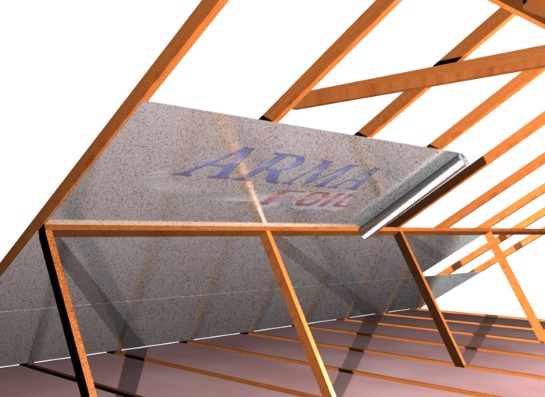One question that we often get is, "Should I install radiant barrier in my attic or add more fiberglass insulation?" Unfortunately, there is no single easy answer to this question. Like many other questions the answer is "it depends..."
Reminders:
- Insulation: Works to slow down conductive heat gained or lost by your house. The higher the R-Value the better.
- Radiant Barrier: Works to block and reflect radiant heat back towards the source. The lower the emissivity value the better.
To intelligently discuss the answer to this question, we need to first understand what each of these two products do and how they work. Most people are familiar with fiberglass insulation and generally know that higher R-Values are better. Very few people are as familiar with radiant barrier foil insulation and how it works. If you are reading this article there is a good chance that you are already familiar with the two. You can read more radiant barrier information if you need a quick refresher.
The common answer...
For many customers the answer ends up being add both. When you get down to it, they each serve a different purpose and you really need both. Radiant Barrier cuts down on radiant heat gain, so it is like moving your home from the sun to the shade. Adding radiant barrier insulation is like putting a second blanket on your bed.
Return on Investment (ROI)
There are several organizations that recommend levels of thermal barrier insulation. The International Energy Conservation Code (IECC) specifies the amounts of attic insulation required by code in different climates. The DOE, Building America and ENERGY STAR also chime in with recommendations, and you will see numbers ranging from R-38 to R-49 in most US climates.
While radiant barrier is starting to become a code requirement in some areas of California and Florida, there isn't a widespread push for it on the national level. How then does a customer know what to do? One way is by examining the actual energy savings from doing each. That is, after all, one of our main goals.
I modeled my home (built in 1973 in Dallas, TX) using the same REMRate software used by HERS raters and the Home ENERGY STAR program. Next, I compared adding an additional R-19 to my existing R-19 level of attic insulation vs installing radiant barrier and the results actually surprised me a little. The radiant barrier resulted in roughly 4 times more savings than the added insulation. The cost to do it myself was roughly the same in both cases so the resulting ROI was 4 times faster for the Radiant Barrier. If you are hiring a professional to install it, the total installed cost of the radiant barrier will be about twice as high as adding insulation. Even then, the ROI is still 2 times better for the radiant barrier.
The single largest type of heat gained by a home is in the form of radiant heat, so it does make sense that radiant barrier has a higher potential for energy savings. If you can't move your home into the shade, adding radiant barrier is the next best thing.
Increase in Comfort
Often, customers are really more concerned with improving their comfort than the amount of energy savings. If this is the case for you (especially in the summer), then adding radiant barrier is generally the way to go. Again, think of standing in the sun vs the shade on a hot sunny day. Since insulation can only absorb radiant heat, it basically just slows it down. On the other hand, since radiant barrier reflects virtually all of the radiant heat, it greatly reduces the total amount of heat radiated from your ceiling down into the house. Since radiant heat plays such a large role in our comfort, it is usually most beneficial to address that component first.
In summary, you generally won't go wrong by just adding both products. However, since most homes already have fiberglass attic insulation, adding radiant barrier will usually have a larger impact on both comfort and energy savings.







